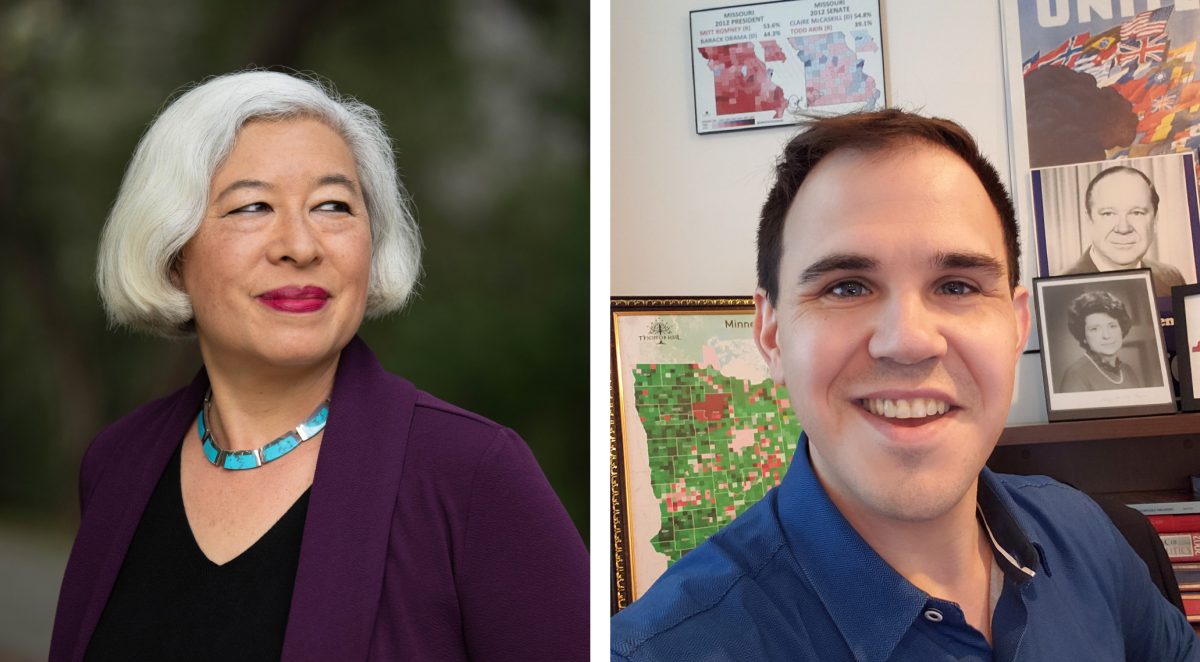With Election Day less than a month away, political tension and stress abound both locally and nationally. Polarization is definitely a contributing factor to the anxiety, but two experts with Charlottesville ties say we may not be as divided as we think.
Now a faculty member at the University of California Santa Barbara, Tania Israel credits growing up in Charlottesville for shaping her work to bridge the political divide.
“I got into this work in Charlottesville,” she says. After organizing a discussion of pro-choice and pro-life locals in the ’90s, Israel was inspired to continue exploring ideological divides. “It didn’t change anything about how I felt about reproductive rights, but it changed so much about how I felt about people who disagreed with me.”
Rather than taking the political science approach, Israel’s examination of polarization draws on her expertise as a doctor of counseling psychology. Her last two books, Beyond Your Bubble and Facing the Fracture (published this August), have focused on understanding and approaching political polarization.
In her work, Israel has found that “we are not nearly as divided as we think we are, our views are not as far apart as we imagine them to be,” but affective polarization remains a critical issue for American democracy and interpersonal relationships.
Diversity of opinion is an important element in maintaining a healthy democracy, but increasing affective polarization—a positive association with one’s own political party and negative feelings toward the opposing party—diminishes the ability for productive dialogue and solution-making.
In a 2022 study, the PEW Research Center found “increasingly, Republicans and Democrats view not just the opposing party but also the people in that party in a negative light. Growing shares in each party now describe those in the other party as more closed-minded, dishonest, immoral and unintelligent than other Americans.” Further, the amount of respondents holding a negative opinion of both major parties has sharply risen, sitting at 27 percent at the time of the survey.
Miles Coleman, an associate editor for Sabato’s Crystal Ball at the University of Virginia Center for Politics, has also noted an increase in both partisan and affective polarization.
“There used to be … more people willing to entertain either side, give their votes to either side. That is not as much a thing anymore,” he says. “Coalitions are more firm now, there are fewer moderate to conservative Democrats or liberal Republicans, so you tend to have more people being … locked into either side.”
Split-ticket, swing, and undecided voters still exist, but misunderstandings around these voters and their positionality is rampant, according to Coleman.
“You do have some voters in the middle who are still willing to vote for either side, but that segment, I feel, is increasingly a smaller and smaller segment of the electorate,” he says. Rather than a moderate portion of the constituency evenly positioned between Democratic and Republican political platforms, numerous swing voters have varying policy positions that contrastingly align with either party.
Conversely, the key undecided group to watch this election cycle is the “double haters,” says Coleman. “These are voters who have unfavorable views of both Harris and Trump. … Those voters who maybe don’t like the high prices, the inflation that we see under Biden, but might not want to go back to the days of Donald Trump.”
Coleman attributes some of the current political climate to media ecosystems. “I blame a lot of this on asocial social media,” he says. “It’s increasingly easy for one side to get kind of their own media ecosystem, their own facts. Both sides, really, to some extent, aren’t even on the same page.”
In her work to bridge this political chasm, Israel has also argued that media and tribal politics have exaggerated and exacerbated polarization.
By design, media are created to attract and maintain engagement, frequently employing tactics to amp up consumer emotions to increase and keep interest. Social media in particular relies and thrives on algorithms, which feed users curated content based on prior activity. Consumers receive and interact with content that incites either strong positive or negative feelings, resulting in ideological “bubbles” of media echoing existing beliefs and combative presentations of opposing viewpoints.
“It’s really hard for us to even think about or want to approach people who have different views, if we have skewed perceptions about who they are,” Israel says. “Study after study for decades has shown that we exaggerate the other side’s views, thinking that they are more extreme than they are, thinking that they are hostile.”
For many Americans, having a political conversation with family and friends across the aisle can be a daunting inevitability, but there are ways to have a civil and meaningful dialogue, according to Israel.
“One of the main reasons people tell me they’re interested in having a conversation with someone who is on the other side of the political divide is because they have somebody who they’re close to, a family member or a friend who they want to stay connected with or repair a relationship with, but it’s really challenging because of the different views,” she says. “Approach with the intention to create a warm and caring connection, where your goal is to understand the other person.”
Through her work, Israel has found listening and trying to understand someone’s perspective to be a key step in holding a productive conversation.
“We think that what we should do is lay out all of the facts and figures and arguments to show the other person that we are right and that they are wrong. It turns out people don’t respond very well to that,” she says. “If we’re listening with the intention to understand, rather than the intention to respond … if we can share our stories … how we came to care about an issue, or if there was somebody or something that shifted our view about it, that’s a much more effective way to share our perspective.”
